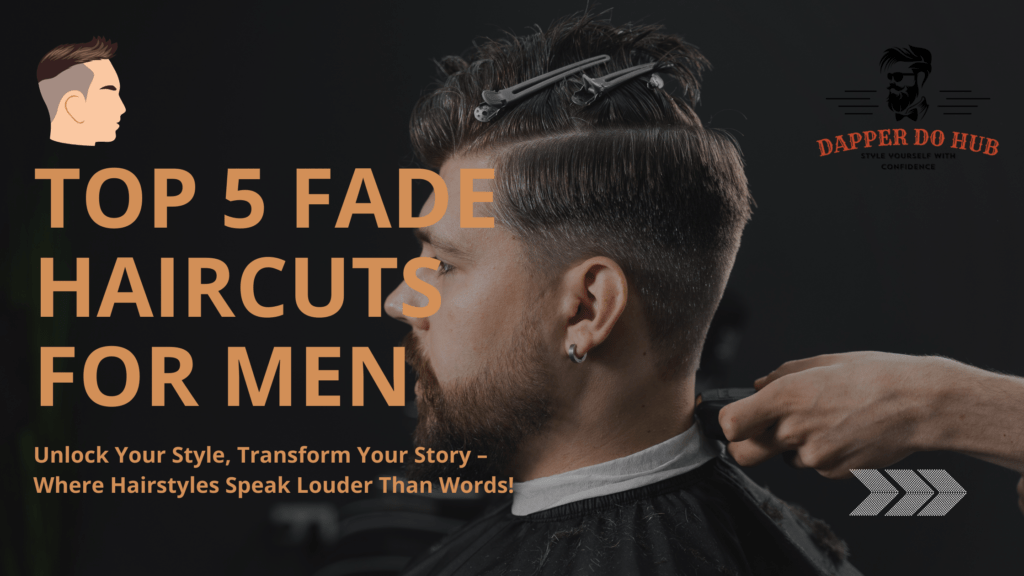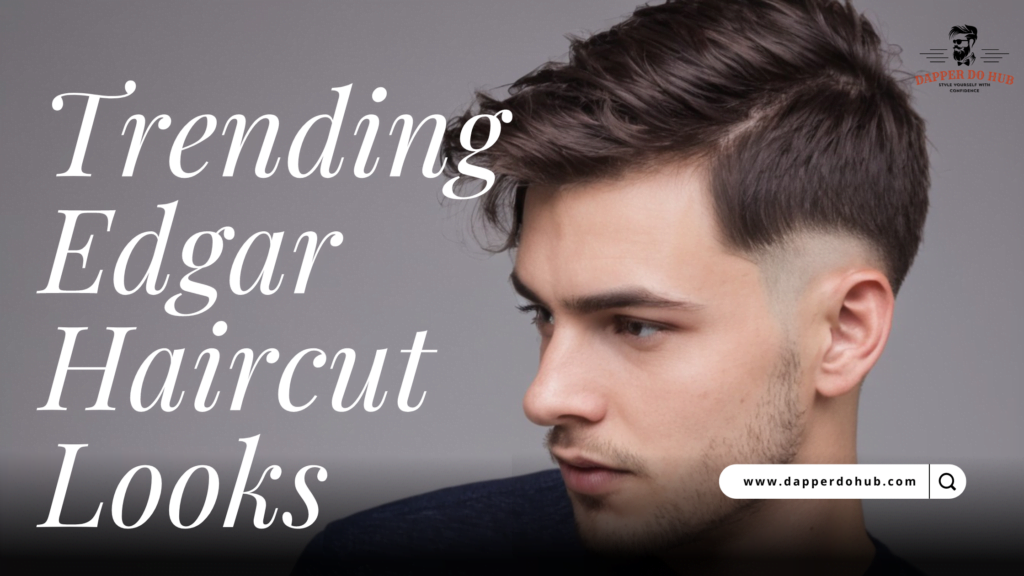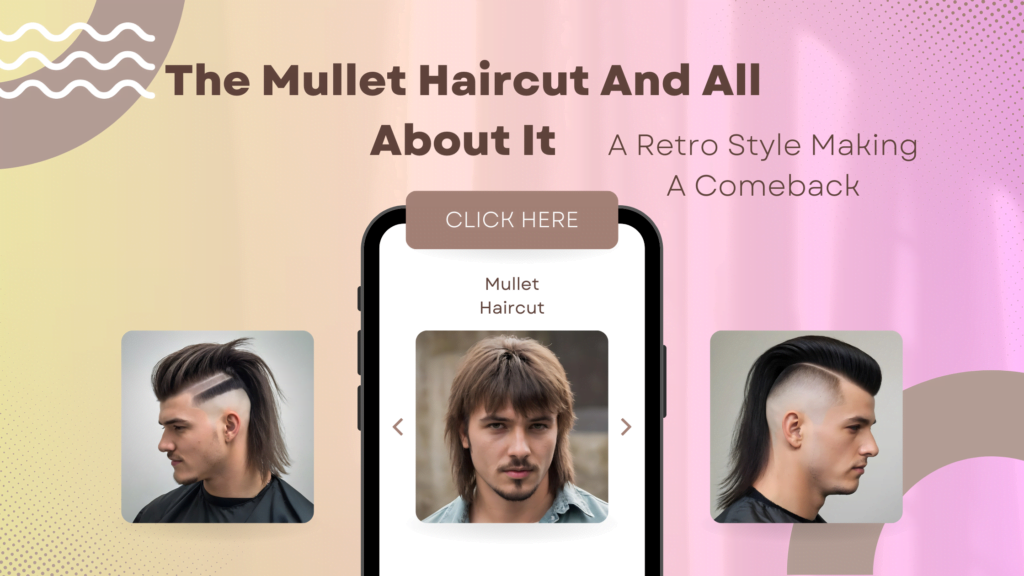Table of Contents
The temple fade haircut has quickly become one of the most popular and versatile styles for men. Whether you’re aiming for a sleek, polished look or something a bit more daring and bold, the temple fade can offer a stylish, modern solution. In this comprehensive guide, we’ll break down everything you need to know about the temple fade haircut, including the different types, how to achieve it, and how to style it to perfection.
Introduction

When it comes to modern men’s hairstyles, the temple fade haircut stands out as one of the most trendy and universally flattering styles. This fade, which starts at or near the temples and gradually blends into the rest of the hair, is known for its sharp, clean lines and polished aesthetic. What makes the temple fade unique is its versatility—it can be customized to fit different face shapes, hair types, and personal styles.
This guide will cover everything you need to master the temple fade, from understanding what it is to styling it in various ways. Whether you’re new to fades or a seasoned veteran looking to try something fresh, this post will provide all the tips and inspiration you need.
What is a Temple Fade Haircut?
A temple fade haircut is a type of fade that begins around the temples, gradually blending into the hair on the sides and back of the head. The fade can vary in intensity, from a subtle blend to a more dramatic drop. The key feature of the temple fade is its clean, sharp look, which offers a contrast to the fuller hair on top.
Unlike a standard fade, which generally focuses on the sides or back, the temple fade specifically targets the area around the temples. This distinctive fade creates a sharp, defined line that draws attention to the upper part of the head and accentuates the natural shape of the face.
Why Choose a Temple Fade?
The temple fade is popular because it works with various hair types and lengths. It also complements many different styles, from casual streetwear to more formal business looks. The fade itself provides a clean, sharp finish, while the top can be styled in countless ways, including with pompadours, quiffs, buzz cuts, or even a curly top.
Check Out: Butterfly Haircut and Maintaining Healthy Hair Post Haircut: Essential Tips and Tricks.
Types of Temple Fade Haircuts
There’s no one-size-fits-all when it comes to the temple fade. Here are a few popular variations that can help you decide which one best suits your style.
1. Classic Temple Fade
The classic temple fade is the most subtle and sophisticated version of this style. It starts at the temples and fades gradually down to the skin or very short hair around the sides and back. This version is ideal for those who want a clean look that still shows off a bit of length on top.
2. Low Temple Fade
A low temple fade begins just above the ear and blends into the sides and back with a smooth, subtle fade. This style is often chosen by men who prefer a more natural, understated look. It’s perfect for people who want to maintain some length but still enjoy the clean lines of a fade.
3. High Temple Fade
If you’re looking for something bolder, a high temple fade could be the answer. This fade begins higher up, closer to the hairline, and fades down more sharply. It gives a more dramatic, eye-catching look, making it a popular choice for those who love making a statement.
4. Burst Temple Fade
The burst temple fade features a fade that curves around the ear, creating a burst-like pattern. It’s often paired with short, tight hair on top, but it can also be blended with longer styles for a unique effect. This variation adds more dimension and creativity to the typical fade.
5. Temple Fade with Designs
For those who want to elevate their temple fade, some barbers can add designs to the fade. This can range from simple lines and patterns to intricate designs shaved into the faded areas. This option is more artistic and can give your haircut a personal touch, especially if you’re someone who loves experimenting with your look.
Who Should Get a Temple Fade Haircut?

The temple fade is an incredibly versatile haircut that suits many face shapes, hair types, and lifestyles. Here are a few things to consider when deciding if a temple fade is right for you.
Face Shapes
The temple fade works well with most face shapes, especially round, square, and oval faces. The fade can help to elongate the face, creating a sharper, more angular appearance. If you have a round face, the fade can create more definition around your jawline, while it can accentuate the features of square or oval faces.
Hair Types
Whether you have straight, curly, or wavy hair, the temple fade can work for you. People with thick or curly hair often opt for the temple fade because it helps manage volume and gives the hair a structured shape. Straight-haired individuals can achieve a sleek, polished finish, while wavy-haired people can create an effortlessly stylish look with a bit of texture.
Age Group
The temple fade is suitable for men of all ages. For younger men, it’s a bold, trendy choice, while older individuals often choose the classic or low temple fade for a more mature, professional look. It’s a haircut that adapts to your personality and lifestyle.
How to Achieve the Perfect Temple Fade?
Getting the perfect temple fade requires the right barber and a clear understanding of what you want. Here are some tips to help you achieve the ideal fade:
1. Find the Right Barber
Not all barbers are skilled at creating fades, so it’s crucial to find someone who specializes in this type of haircut. Check reviews or ask friends for recommendations. A good barber will listen to your preferences, consider your hair type and face shape, and ensure that the fade is symmetrical and well-blended.
2. Communicate Your Style
When sitting in the chair, be sure to clearly communicate what type of temple fade you want. Do you want a subtle, classic fade, or are you looking for something more dramatic, like a high temple fade? Show your barber pictures or examples of styles you like. It’s essential to have a conversation about how long you want the fade to be, whether you want designs or patterns, and how the hair on top should be styled.
3. Aftercare Tips
Once you’ve achieved the perfect temple fade, it’s essential to maintain it to keep it looking sharp. Regular trims (every 2-3 weeks) will help maintain the fade and prevent it from growing out unevenly. Use the right hair products, such as pomades or gels, to keep your style in place, especially if you have textured or curly hair. Additionally, consider using a light-hold product to keep the fade from becoming too stiff.
Temple Fade Haircut Styling Tips
The temple fade haircut offers endless styling possibilities. Here are some ideas to help you get the most out of your fade:
1. Pompadour
A pompadour with a temple fade creates a sharp, edgy look. The height and volume on top contrast beautifully with the sleek, faded sides. This style works best with thick, straight hair, but it can also be adapted for wavy or curly hair.
2. Comb-Over
A comb-over paired with a temple fade is a timeless and professional look. Whether you’re attending a business meeting or a casual outing, this style offers a polished, yet trendy appearance. Use a light styling cream to keep the hair neat and in place.
3. Buzz Cut
A buzz cut with a temple fade offers a low-maintenance, no-fuss hairstyle. This combination is ideal for those who prefer a short, clean-cut style that still has a bit of personality thanks to the fade.
4. Curly Top
If you have curly hair, a curly top with a temple fade can be both stylish and functional. The fade keeps the sides and back neat, while the curls on top add volume and texture. Use a curl-enhancing cream to define your curls and maintain a natural, bouncy look.
Pros and Cons of the Temple Fade Haircut

Like any hairstyle, the temple fade comes with its pros and cons. Here’s a breakdown to help you decide if it’s the right cut for you.
Pros:
- Versatile: Can be styled in numerous ways and suits different face shapes and hair types.
- Low Maintenance: Requires minimal upkeep compared to longer hairstyles.
- Modern and Sharp: The fade creates a clean, stylish look that’s perfect for trendy individuals.
- Customizable: You can personalize the fade to fit your personal style with different fade lengths, designs, or styles on top.
Cons:
- Regular Trims: The fade requires upkeep, and you’ll need to visit the barber regularly to maintain its sharpness.
- Not Ideal for All Hair Types: Some hair types, especially very fine hair, might not take well to a fade.
- Requires a Skilled Barber: Achieving the perfect fade requires a skilled barber, so finding the right person is crucial.
Temple Fade Haircut Inspiration
Looking for inspiration? Here are a few famous personalities who’ve rocked the temple fade:
- LeBron James: Known for his high temple fade, LeBron showcases the dramatic fade with a perfectly styled top.
- David Beckham: A classic example of the temple fade with a comb-over, giving off a timeless yet trendy look.
- Drake: Often seen sporting a burst temple fade, which adds a unique edge to his overall look.
Conclusion
The temple fade haircut is an incredibly versatile and stylish option for men looking to elevate their grooming routine. Whether you prefer a subtle, classic fade or a bold, high fade, this haircut offers flexibility, cleanliness, and modern appeal. It’s a go-to style for those who appreciate sharp lines and a sophisticated, yet trendy look.
By following the tips and guidance in this post, you’ll be well on your way to mastering the temple fade. Remember, communication with your barber is key, and regular maintenance will ensure your fade stays sharp for weeks to come. Go ahead and experiment with different styles, and make the temple fade your new signature look!
For more info: Click Here.
FAQs About the Temple Fade Haircut
1. How often should I get a temple fade trim?
It’s recommended to get your temple fade trimmed every 2-3 weeks to keep it looking sharp and fresh.
2. Can I get a temple fade if I have curly hair?
Absolutely! The temple fade works well with curly hair, especially if you pair it with a curly top. The fade helps define the shape and manage the volume.
3. Is the temple fade good for people with round faces?
Yes, the temple fade is perfect for round faces as it adds definition and sharpness, helping to elongate the face shape.





